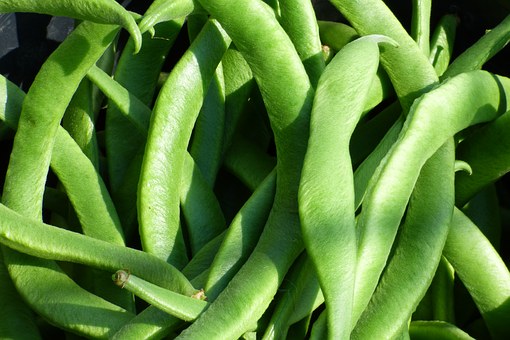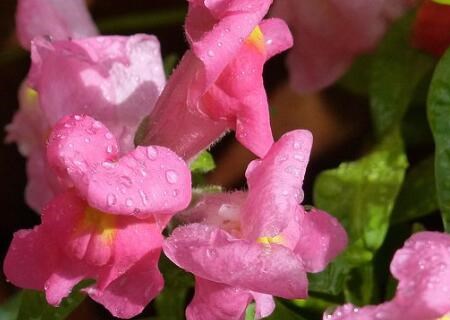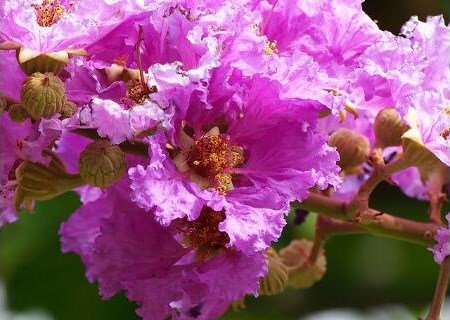Legume plant kidney bean (kidney bean) how much is the market price per jin? When will you plant it? When will you collect it? What are the planting prospects? (
Kidney bean, also known as kidney bean, knife bean, lentil, jade bean, etc., is a common legume plant in temperate and tropical high-altitude areas of our country. It is widely cultivated because it can be used to make pickles, canned vegetables, etc. How much is the market price of kidney beans per jin? When will you plant it? When will you collect it? What are the planting prospects?

Market price:
The market price of kidney bean is about 4 or 5 yuan per jin, and the specific price varies according to time and region.
Planting time:
1. Spring: late March (budding + protected land can be advanced to early March)
Autumn: mid and late August
The above is the situation in Chengdu area, for reference only.
two。 Annual sowing can be made in areas where the ground temperature is above 10 degrees Celsius in winter and the highest temperature is not more than 35 degrees Celsius (in winter, we should pay attention to selecting varieties that are not sensitive to sunshine length).
Harvest time:
It usually takes about 50 days from sowing to harvesting pods. Most of them enter the harvest period in late May.
Planting techniques in different places:
Kidney beans in China are mainly planted in Shanxi, Inner Mongolia, Heilongjiang, Sichuan, Guizhou, Yunnan, * and other areas with short frost-free periods. In order to give full play to the advantages of kidney bean in planting structure adjustment and increasing farmers' income, according to the natural ecological conditions, market demand and local kidney bean production characteristics, the small grain and bean expert guidance group of the agricultural village department and the national agricultural technology extension service center put forward technical guidance for kidney bean production in 2018.
I. kidney bean producing areas in Northeast China
This area includes Hulunbuir, Wulanchabu, Heilongjiang Heihe and Qiqihar in Inner Mongolia. It is mainly mechanized ridge cultivation and is the main producing area and export base of kidney bean in China.
(1) crop rotation. The phenomenon of continuous cropping of kidney bean in this area is serious, which leads to serious diseases such as root rot, resulting in a large area reduction of yield and quality of kidney bean. Crop rotation should be strengthened in production, such as kidney bean and millet, millet, buckwheat, corn, potato, oil and other crops.
(2) to select the best varieties. According to the export requirements, according to the local production conditions and product sales market, kidney bean varieties with moderate growth period and strong disease resistance were selected. The main types of white kidney beans are medium white kidney beans, white kidney beans and small white kidney beans, black kidney beans are mainly small black kidney beans, red kidney beans are mainly crimson kidney beans (English red), small red kidney beans, big red kidney beans, and milk kidney beans are mainly long milk kidney beans and round milk kidney beans.
(3) soil preparation and ridging. The acidity and alkalinity of the plots with flat or overtopped slopes and good drainage should be 6.5Mel 7.0, and black loam, chernozem and sandy loam should be selected. Soil preparation in autumn should be flat and fine, with no large clods after ridging, with small ridges 65 / 70 cm wide, high platforms and large ridges 105 / 110 cm wide and 20 Mel 25 cm high.
(4) Formula fertilization. Soil testing and fertilization was carried out according to soil fertility. For general fertility plots, 1.5 kg of pure nitrogen, 2.5 kg of phosphorus pentoxide and 1 kg of potassium oxide are applied per mu.
(5) sowing seeds at the right time. Generally, when the temperature in the plough layer of 10 cm soil reaches 12 ℃, the sowing time is in the middle and last ten days of May, and the early maturing varieties can be postponed to about June 10. Mechanical precision sowing is mostly used, double rows of seedlings are cultivated on three ridges, and four rows of seedlings are planted on high ridges, so that the soil cover is consistent, and the soil moisture is suppressed in time after sowing. After suppression, the sowing depth is 3Mui 4cm.
(6) reasonable close planting. The planting density varied with varieties, including 80, 000-10, 000 basic seedlings per mu of red kidney bean, 10, 000-12000 white kidney bean, 12000-15000 black kidney bean and 12000-13000 milk kidney bean.
(7) Prevention and control of diseases and pests. The common diseases of kidney bean are root rot, anthracnose, corner spot, bacterial blight, ring rot, Sclerotinia sclerotiorum and gray mold. Measures such as seed disinfection, chemical seed dressing and seed coating should be taken to strengthen the control of anthracnose, root rot and bacterial blight. Kidney bean common underground pests are grubs, mole cricket, ground tiger and so on, harmful to kidney bean seedlings, and have the habit of transforming plants, mostly nocturnal activities, mainly using poison bait to control.
(8) timely harvest. Adopt sectional harvest, the first stage is cutting and pulling (mechanical root cutting), and the second stage is threshing. Machine cutting should not be too late, otherwise it will lead to the increase of pods and the high loss rate in the field. It is necessary to choose early morning pods to work when they are moist and more resilient, to avoid the hot period at noon and to reduce the rate of pods. Dry for about a week after harvest, wait for the pod to dry before threshing, otherwise it is easy to cause grain damage and reduce the commodity value.
Kidney bean producing areas in North China
The area includes Zhangjiakou in Hebei, Xinzhou, Shuozhou, Datong in Shanxi, Wulanchabu and Hohhot in Inner Mongolia. Most of the kidney bean varieties are upright and semi-trailing types, and flat cropping is generally adopted. Crimson kidney bean is not only the main variety in this area, but also the main export product.
(1) soil preparation and fertilization. The dry sloping land and Sichuan platform land with good soil fertility and deep soil layer should be selected, and the deep ploughing and harrowing should be carried out in autumn, and the ground is flat. Combined with sowing in spring, organic fertilizer and seed fertilizer were applied at one time. On the basis of organic fertilizer, 1.5 kg of pure nitrogen, 5 kg of phosphorus pentoxide and 1 kg of potassium oxide were applied per mu. Where there are irrigation conditions, the right amount of topdressing can be applied.
(2) sowing seeds at the right time. When the temperature in the plough layer of 5 cm soil steadily passes through 10 ℃, sowing begins. Shanxi and Inner Mongolia generally sow in the middle of May, and early-maturing varieties can be postponed to the first ten days of June. The depth of sowing is 5ml 7cm, and it is suppressed in time after sowing, and the depth after suppression is 4m 5cm, keeping the soil cover consistent.
(3) planting density. The planting density of crimson kidney bean is determined reasonably according to local precipitation, soil fertility and irrigation conditions. For fields with irrigation conditions, there are 7000 trees per mu of basic seedlings, and 6000 plants per mu of basic seedlings for fields with poor fertility in dry land. The row spacing is 40 cm, the distance between hole sowing plants is 16 mi 25 cm, and two plants are left in each hole.
(4) timely harvest. Kidney beans should not be harvested too late, or pods will be fried. Generally choose the early morning harvest to avoid the high temperature period at noon. Gather the plants together after harvest and dry them in the field for 10 days before threshing. If kidney bean is threshed directly with a threshing machine in the field, it is easy to cause a large number of broken grains, increase imperfect grains and reduce the commercial value. Some kidney bean varieties can not be exposed to the sun after harvest and threshing, otherwise they will lose their inherent color or produce hollow grains and reduce the quality of the goods.
III. Southwest kidney bean producing areas
The area includes Liangshan, Ya'an and northern cold mountain areas in Sichuan, Bijie and Liupanshui in Guizhou, Zhaotong, Qujing, Lijiang and Dali in Yunnan. Among them, Lijiang and Dali in Yunnan are the main producing areas and export bases of large white kidney beans and big black kidney beans in China. Kidney beans planted are two types of common bean and multi-flowered bean, most of them are trailing type, and the variety type is rich.
(1) selection of varieties. Select the varieties of large white kidney bean or big black kidney bean which meet the export requirements and are suitable to be planted in the mountain area with an altitude of 2300 mi 2700 meters. It is appropriate to choose the best-selling varieties such as thin kidney-shaped red purple flower Yun, thin long kidney-shaped milk kidney bean, thin long kidney-shaped white kidney bean; kidney bean varieties have a moderate growth period and are suitable for interplanting with corn.
(2) sowing seeds at an appropriate time. In the Yunnan-Guizhou-Sichuan Plateau, the seeds are usually sown from late April to early May, with a depth of 10ml 15cm and soil cover of about 6cm.
(3) reasonable close planting. Most of the corn in this area is planted in the mountains, and kidney beans are generally intercropped and interplanted according to the planting density required by the corn planting strip. Large white kidney bean and big black kidney bean are mostly monoculture, following the principle of sparse sowing in fertile land and close planting in thin land, fertile land makes use of the advantage of single plant to achieve high yield, and thin land makes use of population advantage to increase yield. Single row ridge planting, row spacing 100cm, pond spacing 60cm, 1000 ponds per mu, sowing 3 plants per pond, ensuring the number of effective plants per mu 2400mu 2600. Double-row ridge planting, large ridge spacing 100 cm, small ridge spacing 60 cm, each bamboo pole 30 cm apart, planting two plants, the average plant spacing is 15 cm. Planting in equal rows, the row spacing is 65ml 75cm, the plant spacing is 15cm.
(4) Field management. Set up the frame in time, and start to build the bracket when there are 6 leaves in the main stem. Topping at the right time, most of the pods can not mature after August, so the tip of the main and lateral vines of the plant should be removed to form a dwarf shrub-like shape, reduce the height, increase the number of flowering and pods, concentrate nutrients on the pods and mature earlier. Pay attention to water control, properly deepen the depth of ditching between ridges, keep the ditch depth more than 25 cm, or increase the height of ridging, which is conducive to drainage and waterlogging prevention. After topdressing outside the root and foliar fertilizer at flowering stage, it was sprayed once every 10 days for 3 times in a row to prolong the functional period of leaves and increase the pod setting rate.
(5) Prevention and control of diseases and insect pests. In full bloom, we must pay close attention to the occurrence of diseases and insect pests and achieve initial prevention and control. The specific methods refer to the kidney bean producing areas in Northeast China.
(6) harvest by stages. Follow the principle of mature picking one batch to ensure the increase of production and income.
Planting prospects:
Kidney bean is rich in nutrition, rich in protein, fat, carbohydrates, dietary fiber, vitamin A, carotene, thiamine, riboflavin, niacin, vitamin C, vitamin E, calcium, phosphorus, sodium and other ingredients.
Kidney bean is the champion of calcium supplement. Kidney beans with skin contain 349 milligrams of calcium per 100 grams, nearly twice as much as soybeans. Its protein content is higher than that of chicken, calcium content is more than 7 times that of chicken, iron content is 4 times, B vitamins are also higher than chicken. Kidney beans are also rich in dietary fiber, which contains more potassium than red beans. Therefore, eating kidney beans in summer can be a good supplement to minerals.
The tender pod contains about 6% protein, 10% fiber and 1% sugar. Dried beans contain about 22.5% protein and 59.6% starch. Fresh and tender pods can be eaten as vegetables, dehydrated or canned.
Kidney bean is a rare food with high potassium, high magnesium and low sodium, which has a great opportunity to show its ability in nutritional treatment. it is suitable for patients with heart disease, arteriosclerosis, hyperlipidemia, hypokalemia and salt taboo.
According to modern medical analysis, kidney bean also contains unique ingredients such as saponins, urease and a variety of globulins, which can improve the immunity of human body, enhance disease resistance, activate lymphoid T cells, and promote the synthesis of deoxyribonucleic acid. It has an inhibitory effect on the development of tumor cells, so it has been paid attention to by the medical community.
Planting kidney beans in 2018 needs to make use of the many functions and values of kidney beans to realize the species effect of kidney beans and make more people realize the benefits of eating kidney beans.
Time: 2019-03-17 Click:
- Prev

What about the wilt of goldfish grass with bright colors? How to maintain the florescence? How much is the seed price per jin?
Goldfish grass is a flower blooming in summer and autumn, widely planted in Chinese gardens, suitable for planting in flower beds and flower borders, and this flower can also be used as a cut flower. So do you know what to do about the wilting of the colorful goldfish grass? How to maintain the florescence? How much is the seed price per jin?
- Next

What are the seed planting methods of crape myrtle in the family Lycopodiaceae? What is the effect and effect? When will it blossom?
Crape myrtle, alias: crape myrtle, Chimonaceae, crape myrtle big tree, colorful, very good-looking, often cultivated garden for ornamental; then do you know what are the seed planting methods of crape myrtle? What is the effect and effect? When will it blossom? According to the big flower crape myrtle grower Sister Li told us
Related
- Fuxing push coffee new agricultural production and marketing class: lack of small-scale processing plants
- Jujube rice field leisure farm deep ploughing Yilan for five years to create a space for organic food and play
- Nongyu Farm-A trial of organic papaya for brave women with advanced technology
- Four points for attention in the prevention and control of diseases and insect pests of edible fungi
- How to add nutrient solution to Edible Fungi
- Is there any good way to control edible fungus mites?
- Open Inoculation Technology of Edible Fungi
- Is there any clever way to use fertilizer for edible fungus in winter?
- What agents are used to kill the pathogens of edible fungi in the mushroom shed?
- Rapid drying of Edible Fungi

